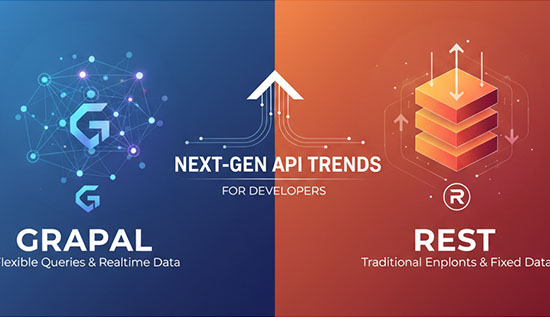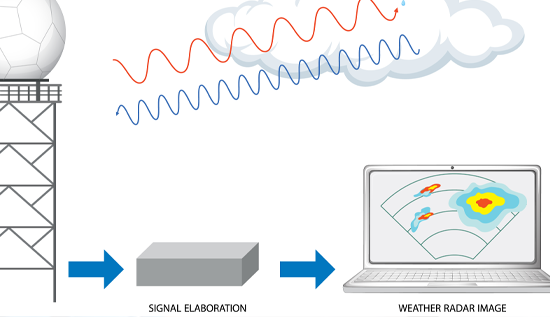Top 5 Types of Blockchain Tech and The Use Cases in Cambodia

Discover the top 5 types of blockchain technology and their real-world use cases in Cambodia. Learn how blockchain is transforming industries today.
Blockchain technology is revolutionizing businesses worldwide, and Cambodia is no different. Blockchain, as a decentralized and secure system of recording transactions, has the potential to improve a wide range of industries, including finance and supply chain management. But what is blockchain, and how does it function in various circumstances, particularly in Cambodia? In this post, we'll look at the main five forms of blockchain’s technology, their distinct features, and how they're being used in Cambodia today.
What Is Blockchain?
Simply put, blockchain is a digital ledger that stores data in a safe, decentralized manner, making it perfect for transparent and tamper-proof transactions. Each "block" on the blockchain comprises transaction data that is added to the chain chronologically. Because of its distributed nature, changing any block without consensus from other users is nearly impossible, making blockchain extremely secure.
Blockchain technology permits the creation of a variety of apps, such as blockchain’s wallets and explorers. A blockchain’s wallet, often called a crypto’s wallet, is a safe way to store, send, and receive cryptocurrency. Blockchain explorers, on the other hand, enable users to examine and verify blockchain transactions, increasing transparency.
1. Public Blockchain: The Foundation of Crypto
A public blockchain is a permissionless, decentralized network that anybody can join and contribute to. Public blockchains, which have gained popularity in cryptocurrency, rely on consensus processes such as Proof of Work (PoW) or Proof of Stake (PoS) to maintain security and transparency.
Use Case: Cryptocurrencies
In Cambodia, public blockchains help to assist the expanding cryptocurrency sector by allowing for safe peer-to-peer financial transactions. Users can manage their digital assets with a crypto wallet, which makes it simple to send and receive cryptocurrencies such as Bitcoin.
Use Case: Blockchain Explorer
Cambodian government entities use public blockchains to increase openness. Citizens can use a blockchain explorer to verify public records such as land ownership, guaranteeing that data is accessible and tamper-proof.
2. Private Blockchain: For Confidential Business Networks
A private blockchain is a closed network, which means that only certain individuals have access. This sort of blockchain is popular among enterprises that require tighter access controls and greater anonymity. Private blockchains, unlike public blockchains, are centralized, allowing for more efficient operations in a regulated setting.
Use Case: Supply Chain Management
Private blockchains in Cambodia's agricultural industry have the potential to improve supply chain transparency. For example, businesses may follow produce from farm to market, assuring quality and safety through secure record-keeping.
Use Case: Financial Services
Private blockchains can also help Cambodian banks optimize their financial processes, allowing them to manage transactions more efficiently while preserving sensitive customer information using private blockchain’s wallets.
3. Consortium Blockchain: A Collaborative Approach
A consortium blockchain is a hybrid paradigm that enables many businesses to share a decentralized network while limiting public access. This sort of blockchain is governed by a group of pre-approved businesses, making it an excellent alternative for industries that value collaboration yet require strict confidentiality.
Use Case: Healthcare Data Sharing
In Cambodia, consortium blockchains can improve healthcare data sharing across hospitals and clinics. By securely sharing patient details, healthcare professionals can increase treatment coordination while safeguarding data privacy.
Use Case: Cross-Border Payments
Consortium blockchains can help Cambodian firms conduct cross-border transactions by connecting banks in different countries, accelerating international trade and lowering transaction costs.
4. Hybrid Blockchain: Combining Public and Private Elements
A hybrid blockchain includes characteristics from both public and private blockchains, allowing businesses to operate on a network that is partially open and partially closed. This configuration is useful when certain data needs to be publicly available while sensitive information remains private.
Use Case: Real Estate
In Cambodia's real estate industry, hybrid blockchains can facilitate transparent property transactions while safeguarding personal information. This can make operations like purchasing or renting properties more efficient and secure.
Use Case: Retail Loyalty Programs
Retailers in Cambodia can use hybrid blockchains to administer customer loyalty programs, ensuring transparency in point accumulation while protecting consumer data.
5. Sidechains: Enhancing Scalability and Speed
Sidechains are separate blockchains that run alongside the main blockchain, or "parent" chain. They let data and assets to flow freely between the parent blockchain and the sidechain, resulting in scalability and reduced congestion on the main network. Sidechains employ their own consensus procedures, which makes them adaptable and versatile.
Use Case: Gaming and NFTs
Sidechains have the potential to bolster Cambodia's burgeoning interest in gaming and NFTs. Sidechains improve the gaming and collecting experience by enabling faster transactions and ownership transfers.
Use Case: Improved Transaction Processing
Sidechains reduce the pressure on the main blockchain in applications that require high transaction volume. This is critical for crypto applications with high-frequency trading, as it ensures that users receive quick, efficient transactions without jeopardizing the parent chain's stability.
How Does Blockchain Work?

Blockchain operates through a decentralized network of nodes, or computers, that collaborate to validate and record transactions. When a transaction is initiated, it is combined with previous transactions to create a "block." This block is then added to the chain after being validated by network participants. Because every transaction is permanently recorded and available to all, blockchains are perfect for high-transparency applications like blockchain explorers.
Users can securely store and manage digital assets using blockchain’s wallets, often known as crypto wallets. Each blockchain’s wallet, whether Bitcoin or Ethereum, has a unique address that users can use to conduct network transactions. Cryptographic keys provide wallet holders with exclusive access to their assets, which ensures security.
Blockchain in Cambodia
Cambodia is increasingly embracing blockchain’s technology in a variety of sectors. The Cambodian government has stated an interest in using blockchain to promote financial inclusion, digital identity verification, and agricultural supply chain management. Local firms and projects are investigating blockchain's potential for increasing transparency in land registration, reducing fraud, and boosting public service efficiency.
For example, growers can use blockchain tech to track product from farm to market, ensuring authenticity and quality for consumers. Furthermore, financial institutions in Cambodia are beginning to use blockchain to secure transactions, opening the path for a more inclusive financial ecosystem.
Conclusion
Blockchain is a strong technology that has numerous applications. From using blockchain’s wallets and studying transaction histories with blockchain explorers to grasping the underlying ideas of what blockchain’s technology provides, the many varieties of blockchain can provide specialized solutions for both individuals and corporations. As Cambodia accepts these technologies, the future seems bright for using blockchain to promote advancement and development.
Read More: How Does Blockchain Support Data Privacy?
Frequently Asked Questions (FAQs)
Q1: What is blockchain technology?
A1: Blockchain technology is a decentralized, digital ledger system that allows for secure and transparent data sharing across networks.
Q2: How does a blockchain wallet work?
A2: A blockchain wallet securely holds digital assets and enables transactions across several blockchain networks.
Q3: What is a blockchain in crypto?
A3: A blockchain in cryptocurrency is a secure, decentralized ledger that keeps track of all bitcoin transactions, providing transparency and avoiding tampering.
Q4: What is the difference between a blockchain wallet and a crypto wallet?
A4: A blockchain wallet can hold several digital assets, whereas a crypto wallet only holds cryptocurrencies.
More Articles
 20 Nov 2025
20 Nov 2025
GraphQL vs REST: Next-Gen API Trends for Developers
Compare GraphQL vs REST to optimize API performance, scalability and modern application design with best practices for developers.
 20 Nov 2025
20 Nov 2025
Neural Network Programming Beyond Python: Rust & C++
Experience neural network programming beyond Python, powered by Rust and C++ ecosystems built for speed, safety, and large-scale deployment.
 19 Nov 2025
19 Nov 2025
Swarm Robotics in Agriculture & Logistics: Smart Automation
Swarm Robotics in Agriculture & Logistics enhances automation, efficiency, and smart coordination across modern farming and logistics operations.
 19 Nov 2025
19 Nov 2025
Ultra-Low Latency Networks for VR/AR: Optimized Performance
🚀 Discover how Ultra-Low Latency Networks for VR/AR are transforming real-time experiences with 5G, edge computing, and seamless data transmission.